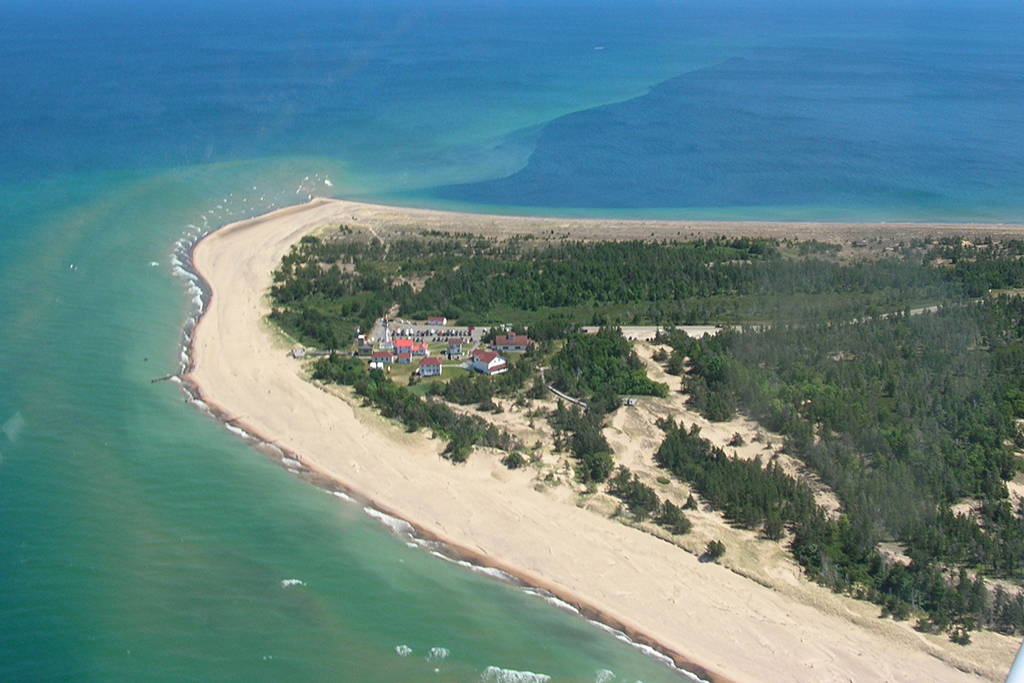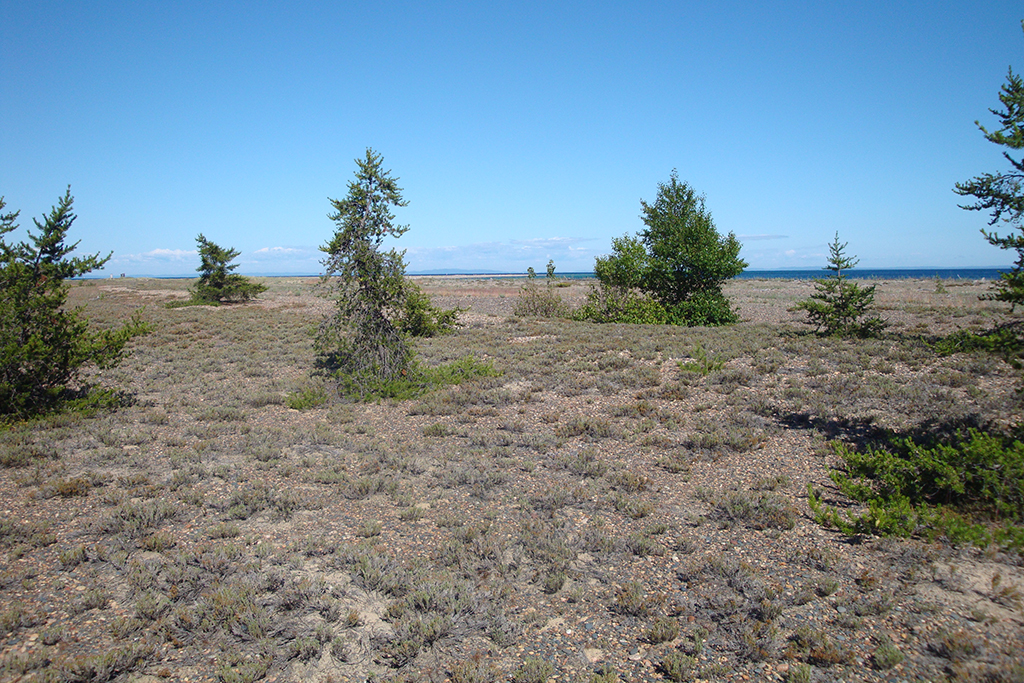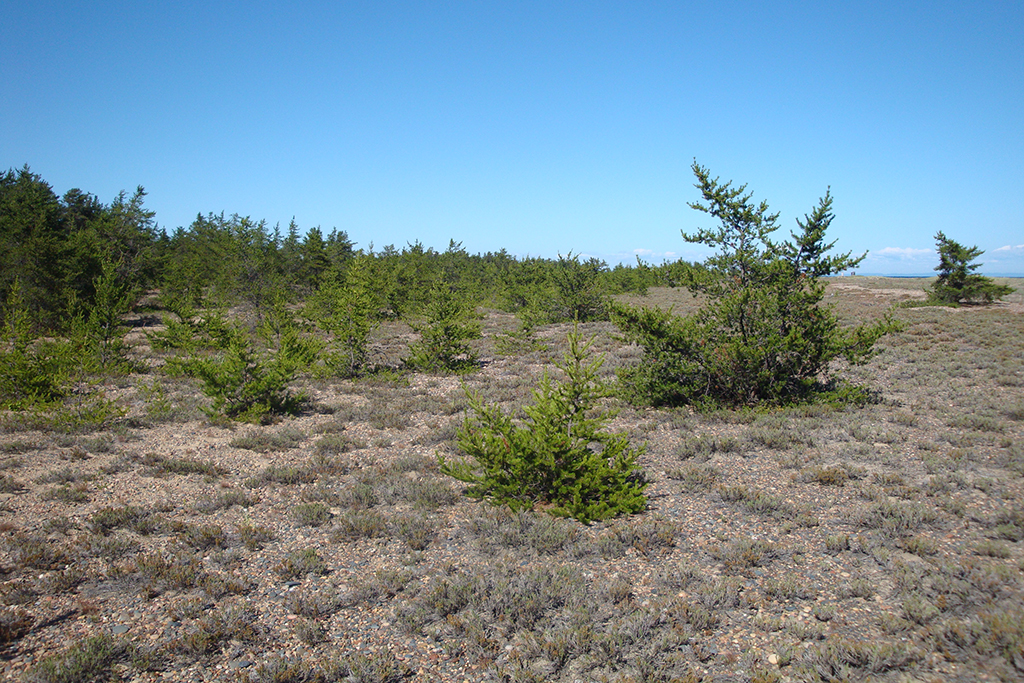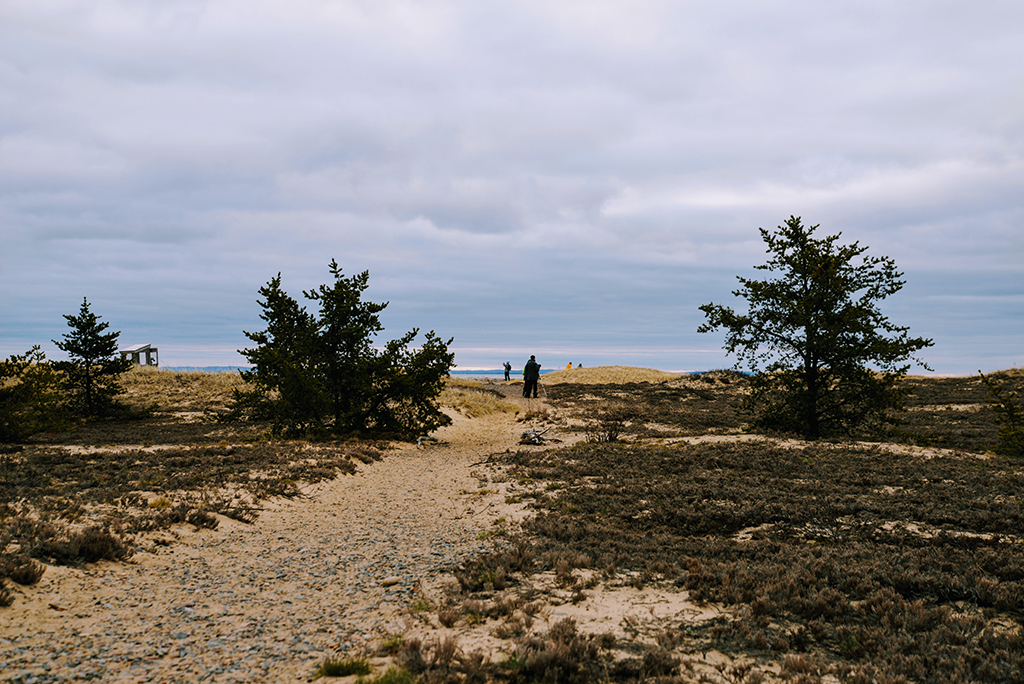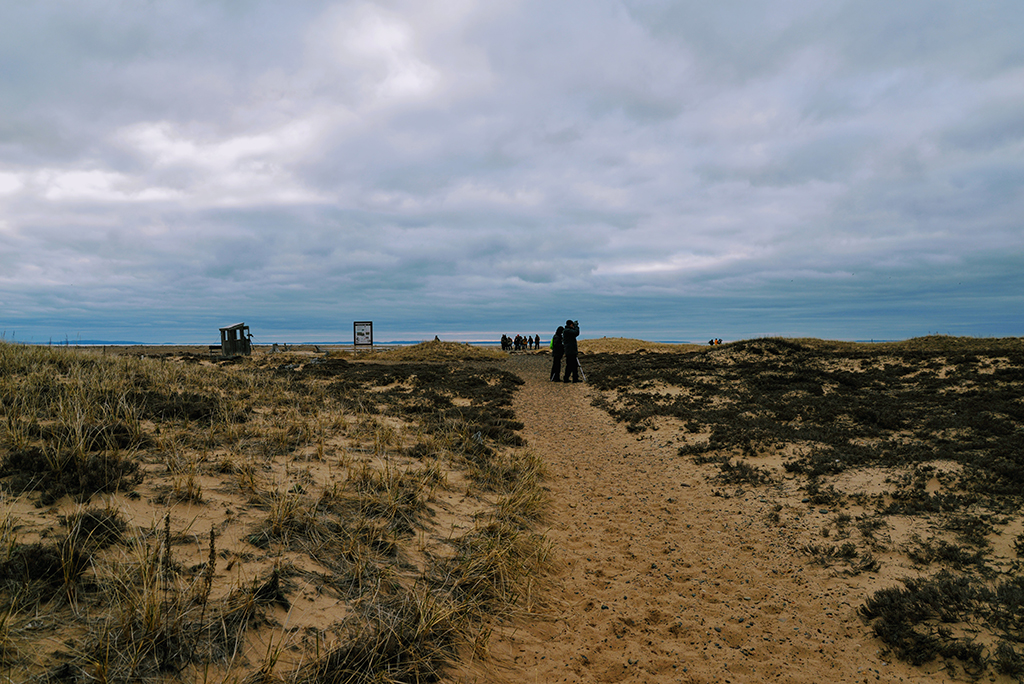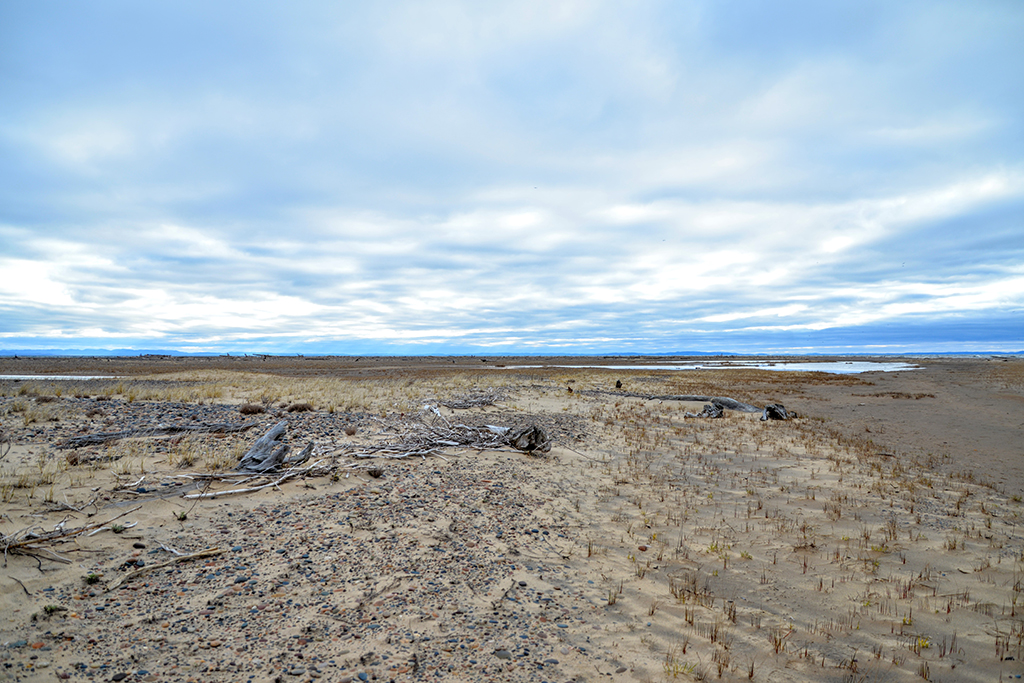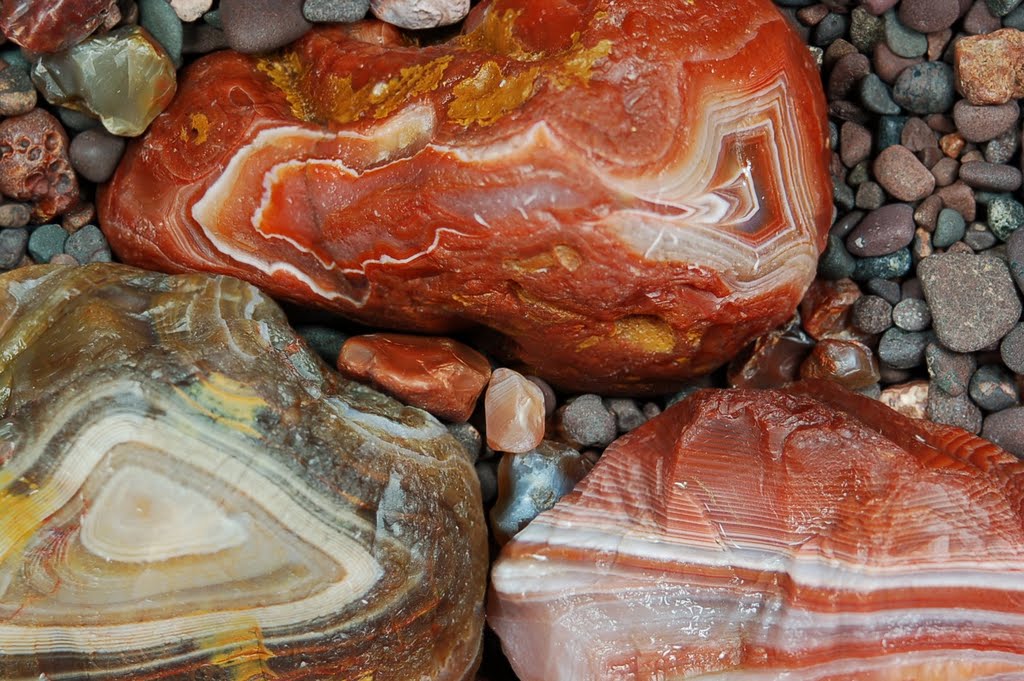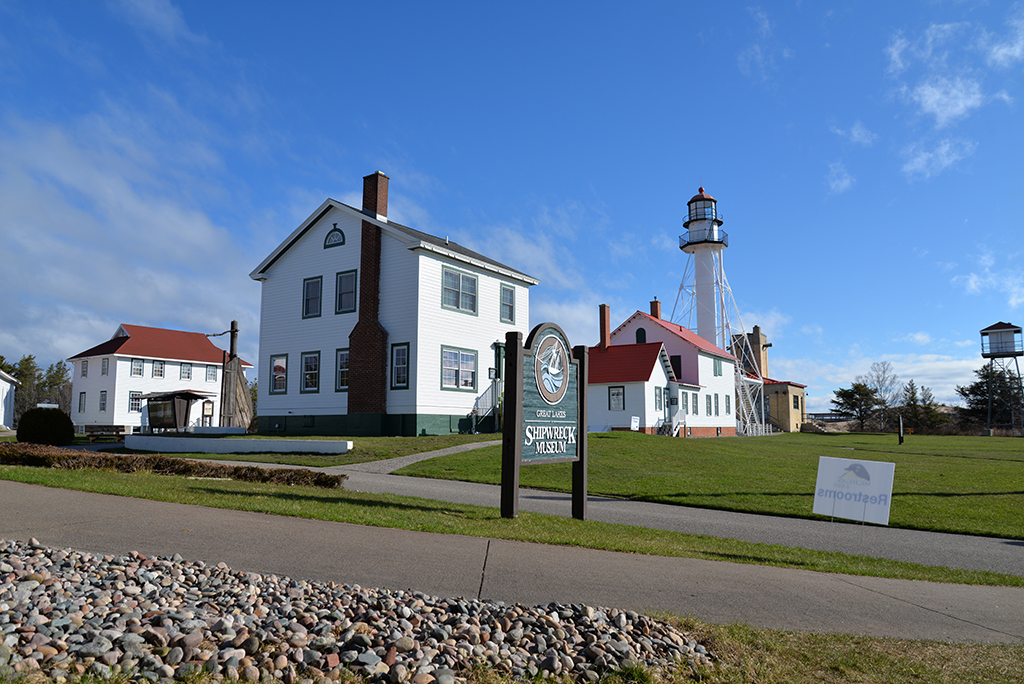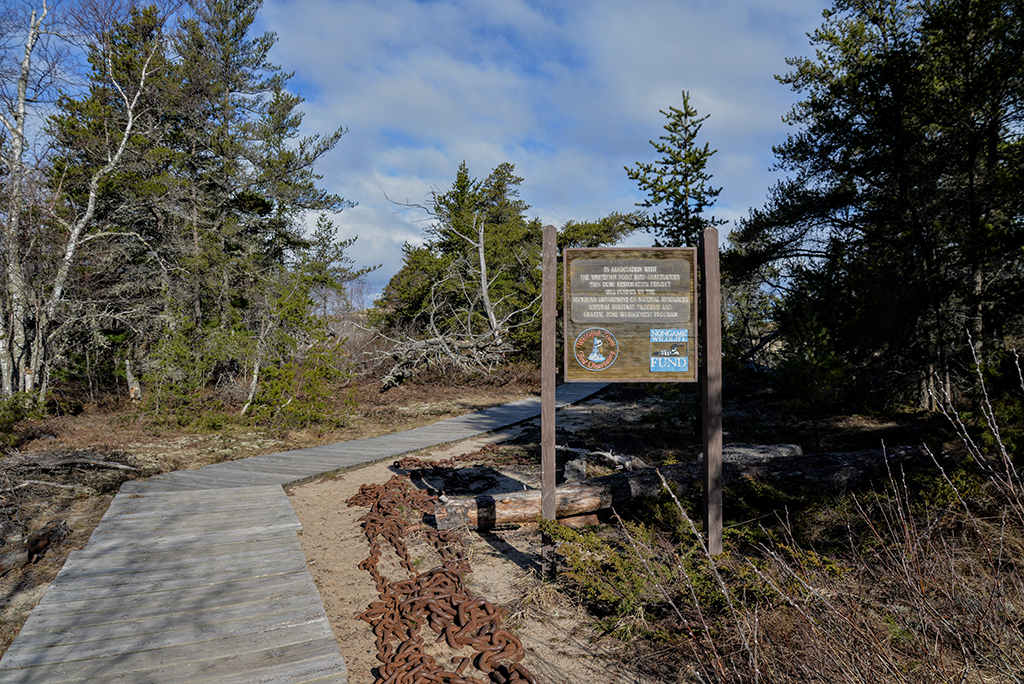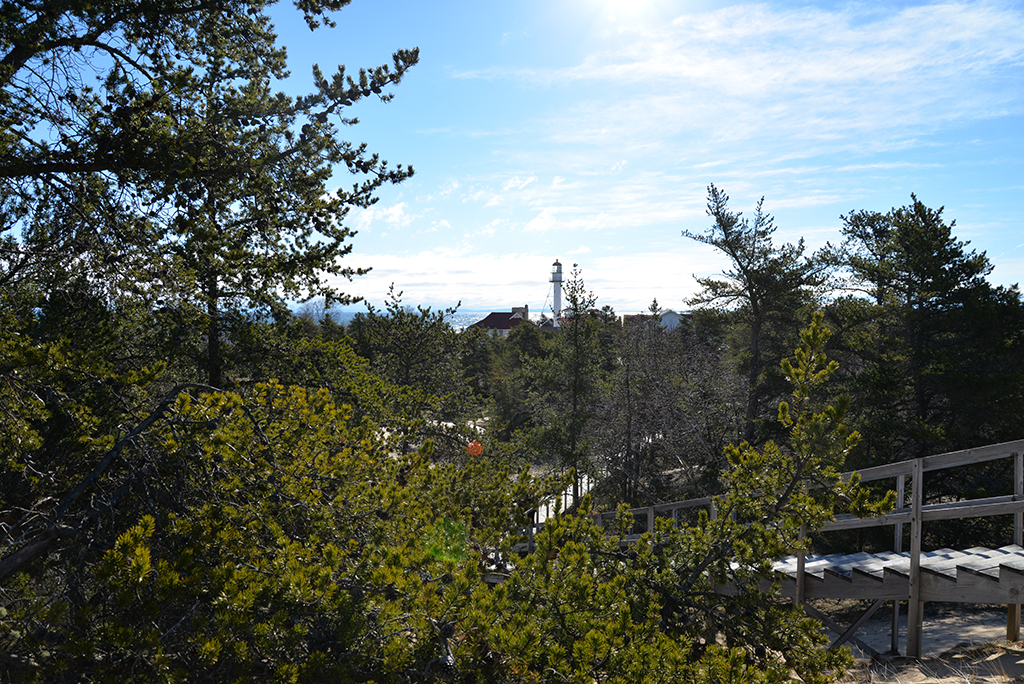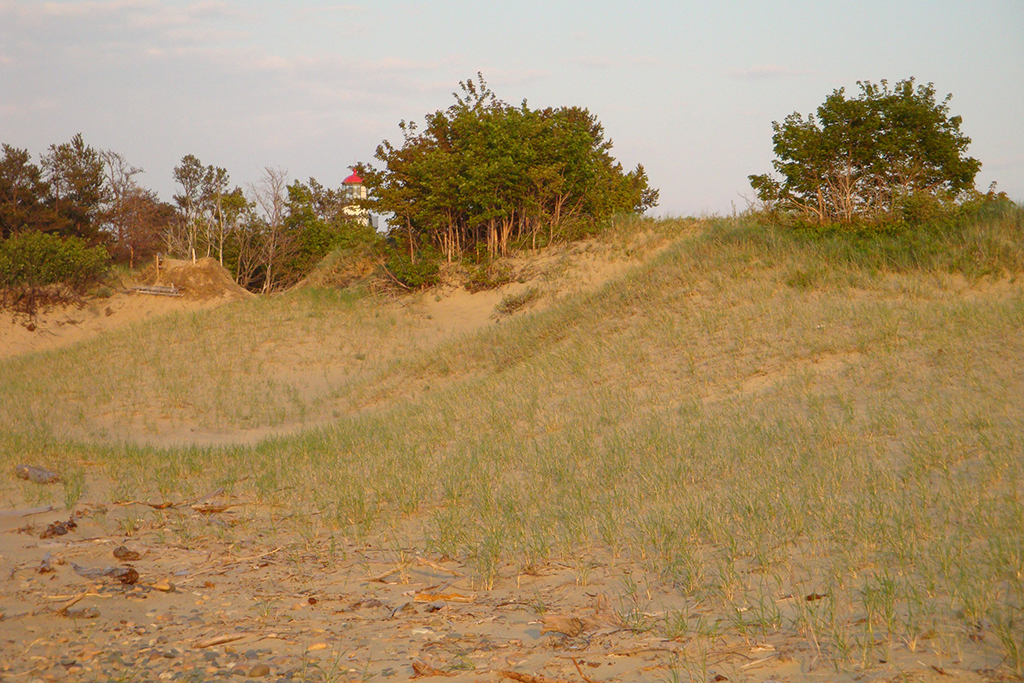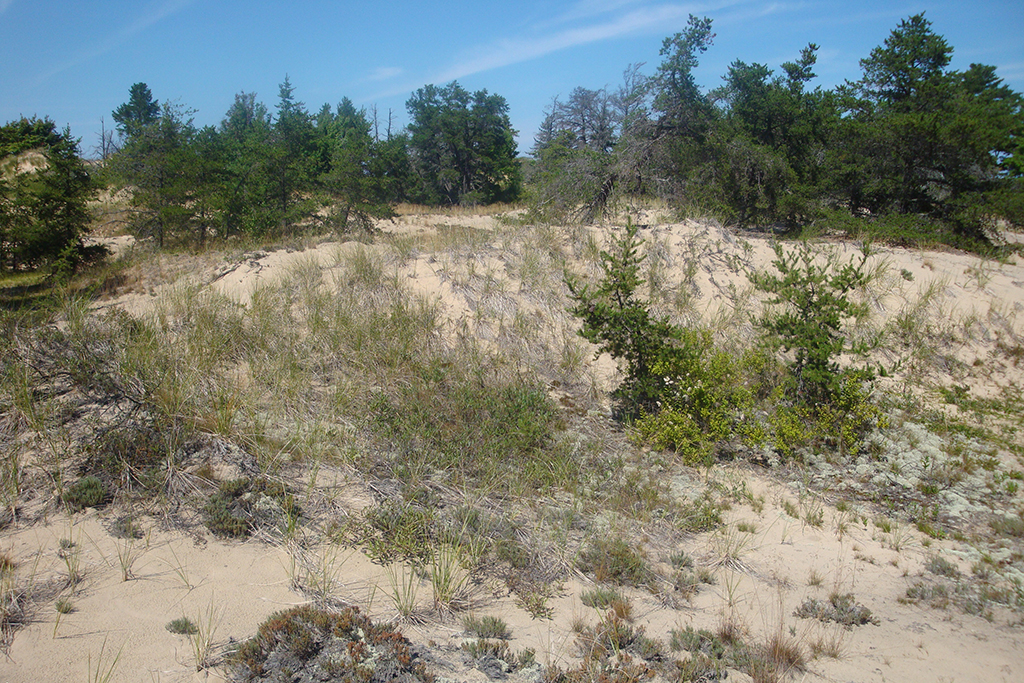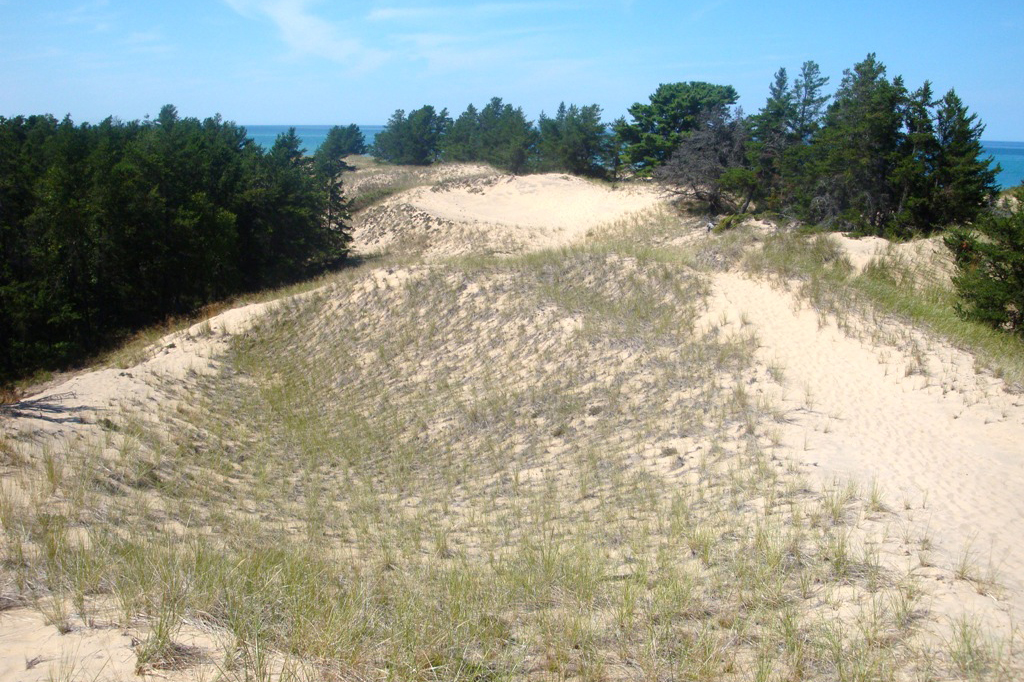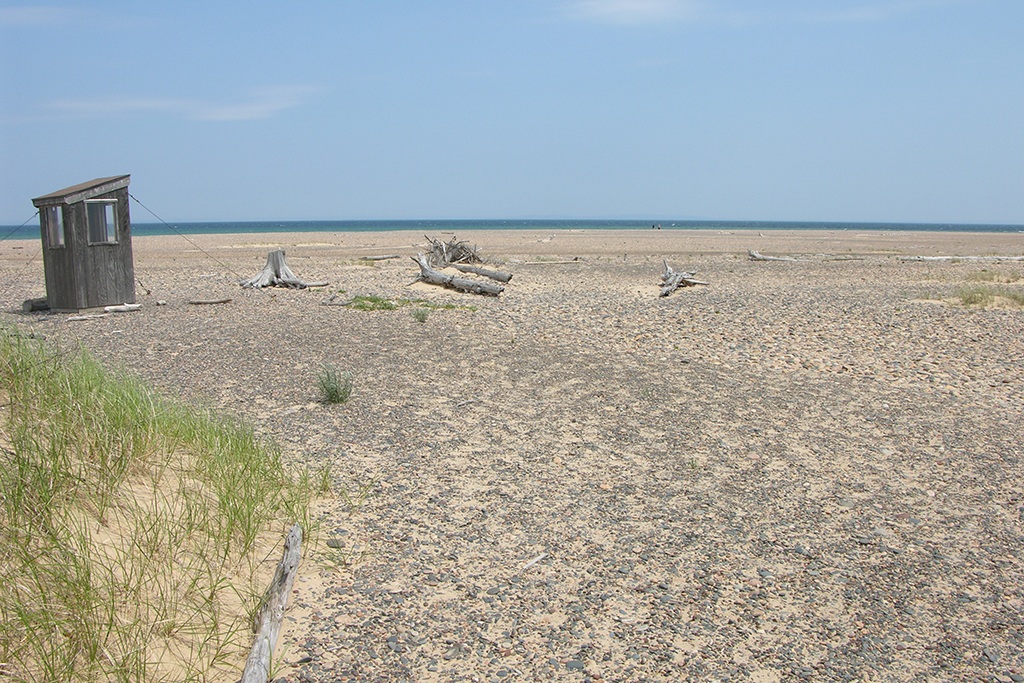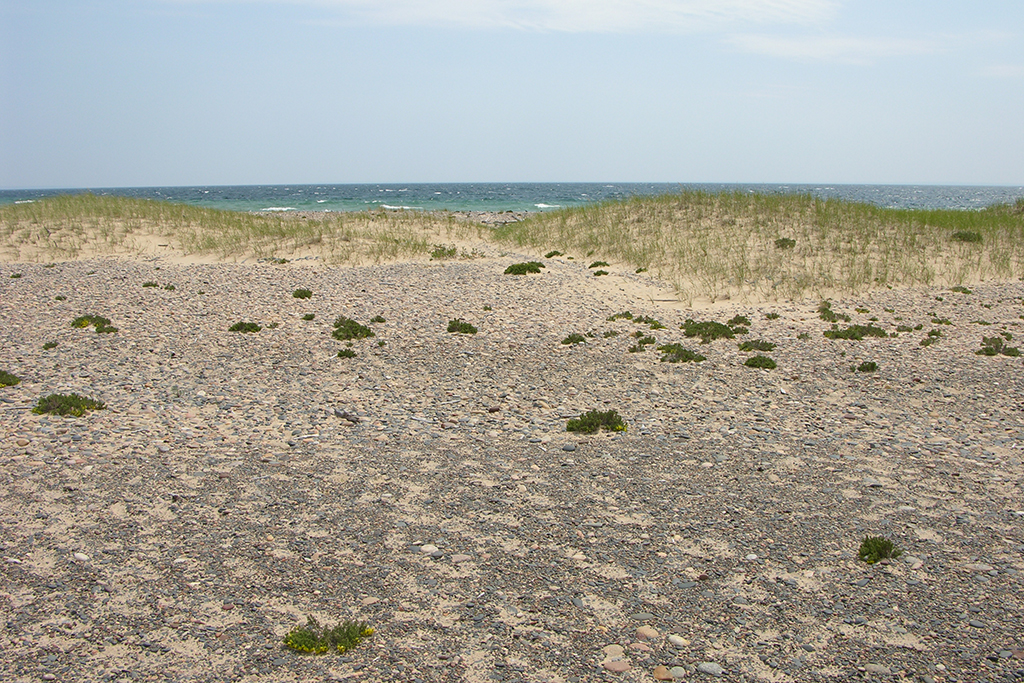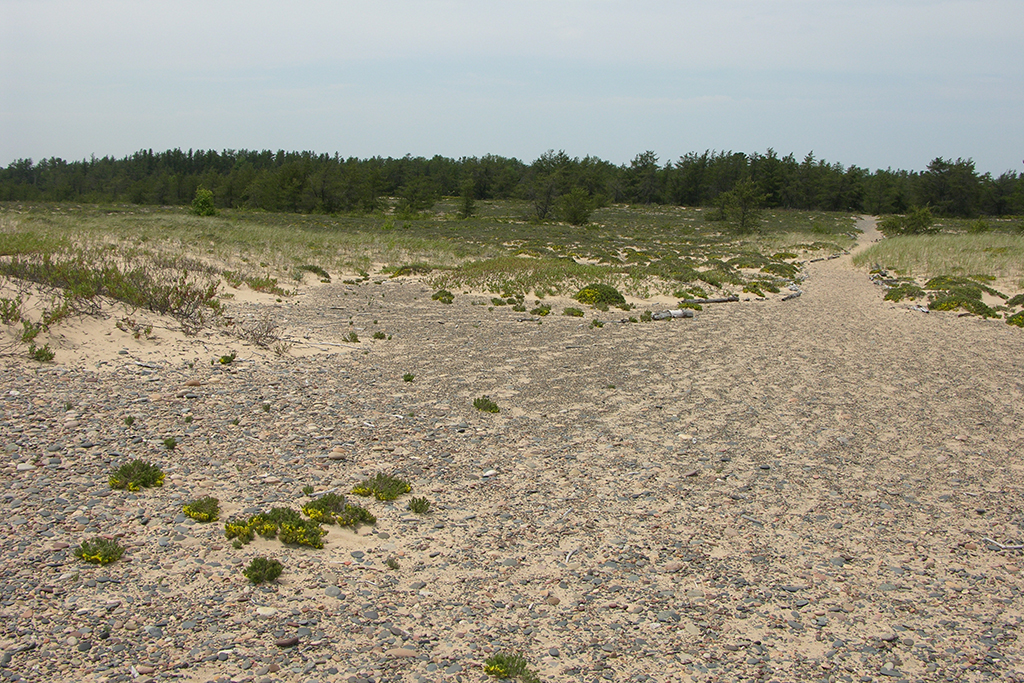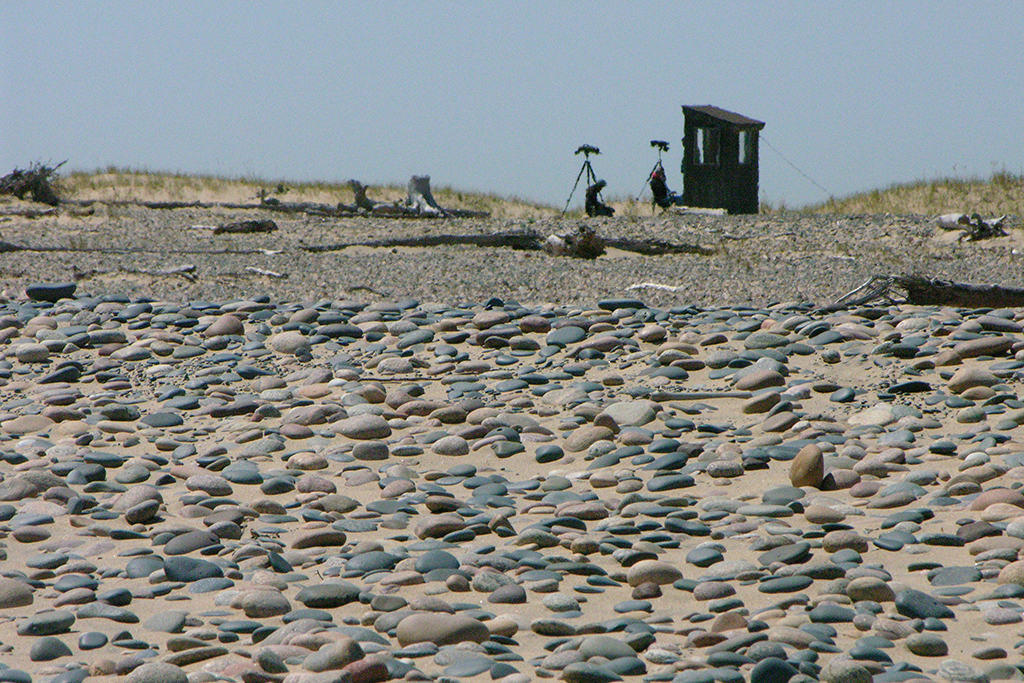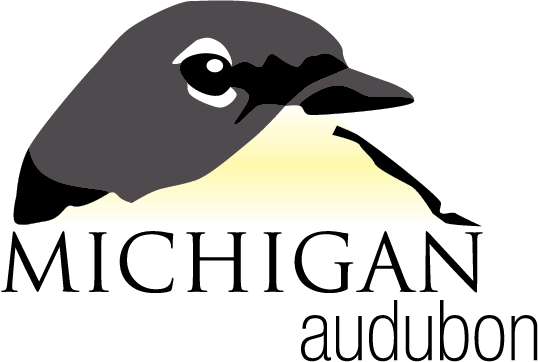What makes Whitefish Point unique?
The shape of Whitefish Point, a peninsula that stretches out into Lake Superior, creates a natural migration corridor. Hemmed in by water on either side, Whitefish Point’s land and water features create a natural corridor that funnels thousands of birds through the Great Lakes region during spring and fall migrations, providing unique opportunities for research, education, and conservation programs. As a concentration zone for migrating birds, the Point has been identified an Important Bird Area for several species of conservation need. Thousands of birds use Whitefish Point as critical stopover habitat to replenish energy reserves before venturing across Lake Superior during spring and fall migrations.
The habitats surrounding the Point are ideal for many of Michigan’s boreal birds. Along with summer and yearlong residents, the area attracts numerous winter migrants atypical in the southern part of the state.
Over 340 species of birds have been seen at the Point including: White-winged Scoter, Red-throated Loon, Spruce Grouse, Rough-legged Hawk, Jaegers, Great Gray Owl, Boreal Owl, Black-backed Woodpecker, Boreal Chickadee, over 30 species of warblers and northern finches like Pine and Evening Grosbeaks, Redpolls and Crossbills to name just a few.
The History of WPBO
For 40 years, Whitefish Point Bird Observatory has been monitoring and documenting the migration of tens of thousands of birds that funnel to the Point every Spring and Fall.
Whitefish Point has not always been the well-studied area it is today. Prior to 1912, the migration significance of the Point was unknown to science. Scientific observation efforts began July 6, 1912, initiated by Norman Wood and the University of Michigan’s Museum of Zoology as part of the Shiras expeditions. Other biological and geological studies were being carried out in the Eastern Upper Peninsula at the same time through the assistance of the Honorable George Shiras III. On that first expedition and a follow-up in 1914, Norman Wood counted a total of 163 species. Today, over 340 species of birds have been sighted at the Point.
The first formal banding project began in 1966 as a collaboration between J.O.L. Roberts of the Ontario Bird Banding Association and Alice and Neil Kelley from Cranbrook Institute of Science. Their primary focus was gathering data on the Sharp-shinned Hawk but eventually grew to include surveys of migrating owls. The banding continued officially every spring from 1966 through 1971, and in the following years, several banders jointly continued the work on their own.
Eventually, in 1976, Michigan Audubon established a Whitefish Point Committee, which resulted in the official creation of Whitefish Point Bird Observatory in 1979. The Point has been staffed by dedicated professionals, volunteers, and was led by a volunteer-board until 2016. In January 2016 Michigan Audubon assumed ownership after years of partnering with WPBO.
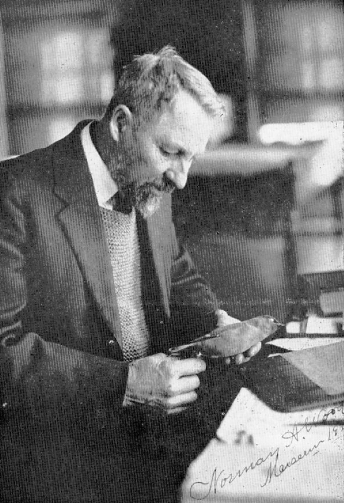
Dr. Norman Wood
Our Mission
Whitefish Point Bird Observatory is a program of Michigan Audubon. Our mission is to document the distribution and abundance of birds in the Great Lakes Region, with special emphasis on migration and habitat.
Our research and conservation projects focus on:
- Assessing the status of bird populations and movements. Our data increases knowledge, encourages public awareness of birds and the environment, and advances bird conservation as part of Michigan Audubon’s mission to connect birds and people for the benefit of both.
- Habitat protection, stewardship, and restoration work on and around Whitefish Point, with particular emphasis on Jack Pine and Dune and Swale habitats.
- Monitoring Piping Plovers and provide protection to nesting areas.
WPBO conducts annual migration counts for raptors (spring only), and waterbirds (spring and fall). WPBO has also undertaken an owl banding project for the last three decades, historically occurring in the spring and fall, but that has recently grown to include summer owl banding for juvenile Northern Saw-whet Owls.

WPBO: a program of Michigan Audubon
Whitefish Point Bird Observatory became a program solely operated by Michigan Audubon as of January 1, 2016. All programs, research, and staff are maintained by Michigan Audubon, and all members of Michigan Audubon are considered members of WPBO (and vice versa). Michigan Audubon is dedicated to ongoing research, monitoring, restoration, education, and conservation efforts at WPBO, and depends on member support and donations to continue improving important bird conservation efforts at WPBO.
WPBO conducts annual migration counts for raptors (spring only), and waterbirds (spring and fall). WPBO has also maintained an owl banding program for the last three decades, historically occurring in the spring and fall, but that has recently grown to include summer owl banding for juvenile Northern Saw-whet Owls.
Meet the Staff
Clay Bliznick: 2025 Field Ornithologist
 Clay worked as the WPBO fall field ornithologist in 2024 and is excited to return for the fall of 2025. He first took an interest in birds during a high school trip to Alaska, where he was struck by the flamboyance of magpies, the sleek, penguin-like appearance of alcids, and the sheer number of waterbirds residing along the coast. He dove headfirst into the world of birding while an undergraduate at the University of Kentucky, spending every free second exploring his home state for exciting new birds and places. Afterwards, he attended graduate school at Murray State University and wrote a master’s thesis examining the response of bird communities to environmental factors in Western KY bottomland hardwood forest restorations. For the last several years, Clay has traveled throughout the US working with birds in varying capacities, including nest monitoring of Florida Grasshopper Sparrows and Crested Caracaras, conducting surveys of Swallow-tailed Kite post-breeding roosts, and collecting breeding bird data in North and South Dakota for the Bird Conservancy of the Rockies.
Clay worked as the WPBO fall field ornithologist in 2024 and is excited to return for the fall of 2025. He first took an interest in birds during a high school trip to Alaska, where he was struck by the flamboyance of magpies, the sleek, penguin-like appearance of alcids, and the sheer number of waterbirds residing along the coast. He dove headfirst into the world of birding while an undergraduate at the University of Kentucky, spending every free second exploring his home state for exciting new birds and places. Afterwards, he attended graduate school at Murray State University and wrote a master’s thesis examining the response of bird communities to environmental factors in Western KY bottomland hardwood forest restorations. For the last several years, Clay has traveled throughout the US working with birds in varying capacities, including nest monitoring of Florida Grasshopper Sparrows and Crested Caracaras, conducting surveys of Swallow-tailed Kite post-breeding roosts, and collecting breeding bird data in North and South Dakota for the Bird Conservancy of the Rockies.
Frank Fabbro: 2025 Fall Waterbird Counter
 Frank is an avid birder who was first introduced to the spectacle of bird migration along the Mississippi Flyway in his home state of Minnesota ten years ago. Since then, he has pursued his passion for birds, and the amazing places they inhabit, across the country and around the world. He studied Wildlife Biology and Landscape Restoration at the University of California, Davis, and since graduating has worked on a variety of bird-related projects, ranging from Spotted Owl surveys to prairie-chicken tagging and counting migrating seabirds. He’s excited to be back in the Northwoods, once again experiencing the excitement of fall migration along the shores of Lake Superior. When he’s not glued to a scope scanning large bodies of water, Frank enjoys playing guitar and exploring new habitats in search of native plants and herps.
Frank is an avid birder who was first introduced to the spectacle of bird migration along the Mississippi Flyway in his home state of Minnesota ten years ago. Since then, he has pursued his passion for birds, and the amazing places they inhabit, across the country and around the world. He studied Wildlife Biology and Landscape Restoration at the University of California, Davis, and since graduating has worked on a variety of bird-related projects, ranging from Spotted Owl surveys to prairie-chicken tagging and counting migrating seabirds. He’s excited to be back in the Northwoods, once again experiencing the excitement of fall migration along the shores of Lake Superior. When he’s not glued to a scope scanning large bodies of water, Frank enjoys playing guitar and exploring new habitats in search of native plants and herps.
Stephanie Owens: 2025 Piping Plover Monitor
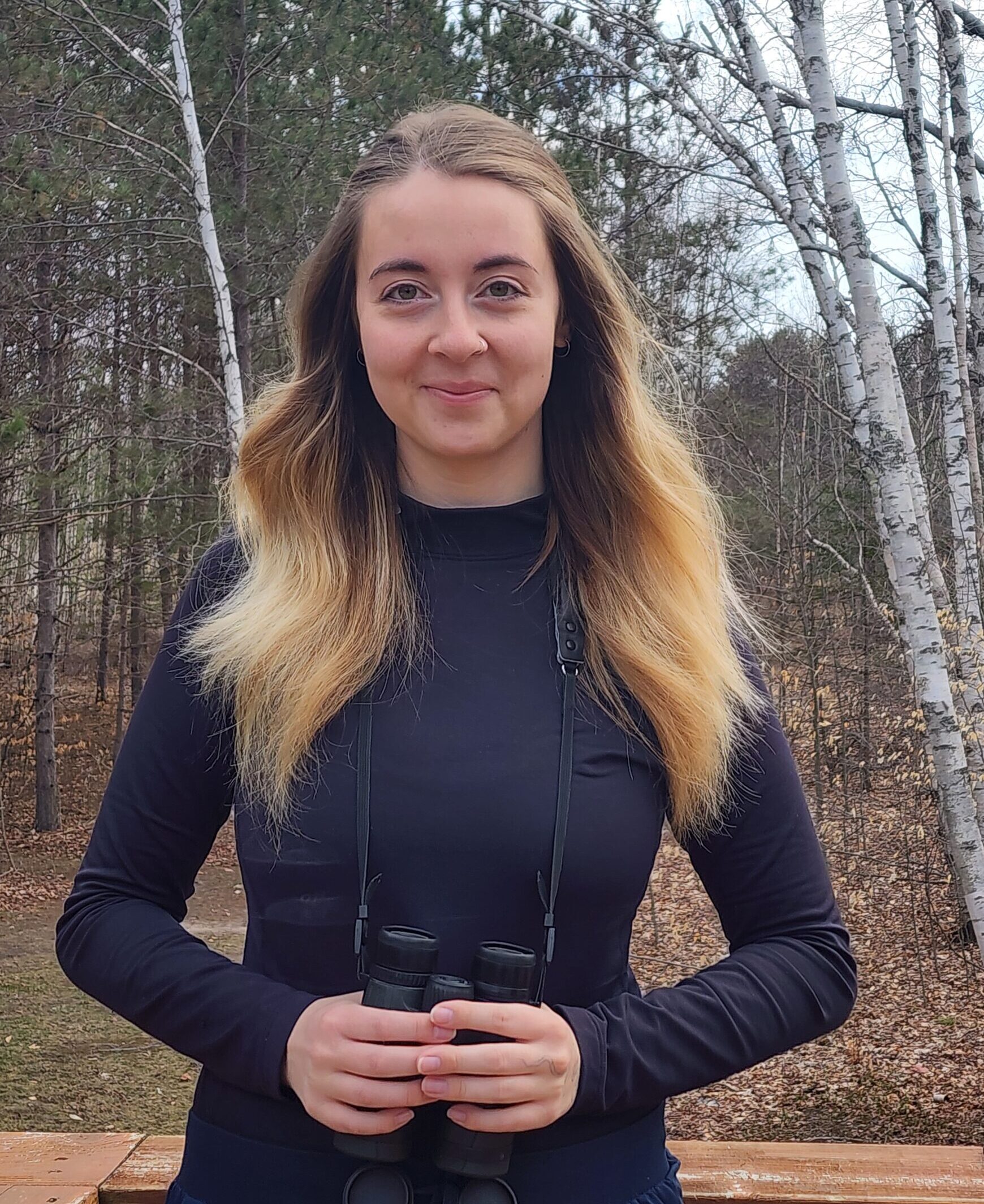 Having grown up in the Upper Peninsula of Michigan, an appreciation of the outdoors seemed inevitable for Stephanie. Walks in the woods with her father and high school science courses helped her identify this passion. In 2024, she earned a Bachelor of Science in Conservation Biology from Lake Superior State University, where she completed her senior thesis on the distribution of per- and polyfluoroalkyl substances in Eastern Upper Peninsula waterways. Now, with three seasons of PIPL monitoring under her belt, she looks forward to another summer with the U.P. plovers and returning to WPBO after a successful ’24 season. After the end of last season, Stephanie began her work at Eva Burrell Animal Shelter as a canine caretaker, fostering hope and love for all animals there.
Having grown up in the Upper Peninsula of Michigan, an appreciation of the outdoors seemed inevitable for Stephanie. Walks in the woods with her father and high school science courses helped her identify this passion. In 2024, she earned a Bachelor of Science in Conservation Biology from Lake Superior State University, where she completed her senior thesis on the distribution of per- and polyfluoroalkyl substances in Eastern Upper Peninsula waterways. Now, with three seasons of PIPL monitoring under her belt, she looks forward to another summer with the U.P. plovers and returning to WPBO after a successful ’24 season. After the end of last season, Stephanie began her work at Eva Burrell Animal Shelter as a canine caretaker, fostering hope and love for all animals there.
Sean McLaughlin: 2025 Raptor Counter
 Sean is a hawk watcher from Pennsylvania, and his passion for raptors began at an early age while visiting nearby count sites. He cut his teeth on the Appalachian Ridges of Stone Mountain and Tussey Mountain before heading to the North Shore of Lake Superior. Since 2022, Sean has conducted spring and fall raptor counts at Hawk Ridge Bird Observatory in Duluth, Minnesota. He is particularly excited to explore the other end of Lake Superior and a different array of spring migrants at Whitefish Point. Sean loves to watch visible migration of birds and has grown particularly interested in morning flight counts of migrating non-raptors. When not watching birds migrate, Sean enjoys fly fishing, gravel biking, and thinking about migration.
Sean is a hawk watcher from Pennsylvania, and his passion for raptors began at an early age while visiting nearby count sites. He cut his teeth on the Appalachian Ridges of Stone Mountain and Tussey Mountain before heading to the North Shore of Lake Superior. Since 2022, Sean has conducted spring and fall raptor counts at Hawk Ridge Bird Observatory in Duluth, Minnesota. He is particularly excited to explore the other end of Lake Superior and a different array of spring migrants at Whitefish Point. Sean loves to watch visible migration of birds and has grown particularly interested in morning flight counts of migrating non-raptors. When not watching birds migrate, Sean enjoys fly fishing, gravel biking, and thinking about migration.
Martina Nordstrand: 2025 Spring Waterbird Counter
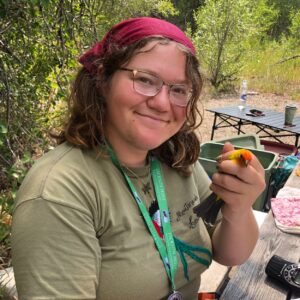 Martina is a birder and biologist from North Carolina, where she started birding in her early teens. Her interest in birds and wildlife led her to North Carolina State University, where she graduated with a B.S. in Fisheries, Wildlife, and Conservation Biology. Since then, she has been around the country working a variety of ornithological field jobs. She has always been fascinated with migration, especially visible migration, and is excited to spend the spring counting at the Point! Besides birds, Martina is interested in all aspects of nature, especially snakes, salamanders, wildflowers, and butterflies.
Martina is a birder and biologist from North Carolina, where she started birding in her early teens. Her interest in birds and wildlife led her to North Carolina State University, where she graduated with a B.S. in Fisheries, Wildlife, and Conservation Biology. Since then, she has been around the country working a variety of ornithological field jobs. She has always been fascinated with migration, especially visible migration, and is excited to spend the spring counting at the Point! Besides birds, Martina is interested in all aspects of nature, especially snakes, salamanders, wildflowers, and butterflies.

